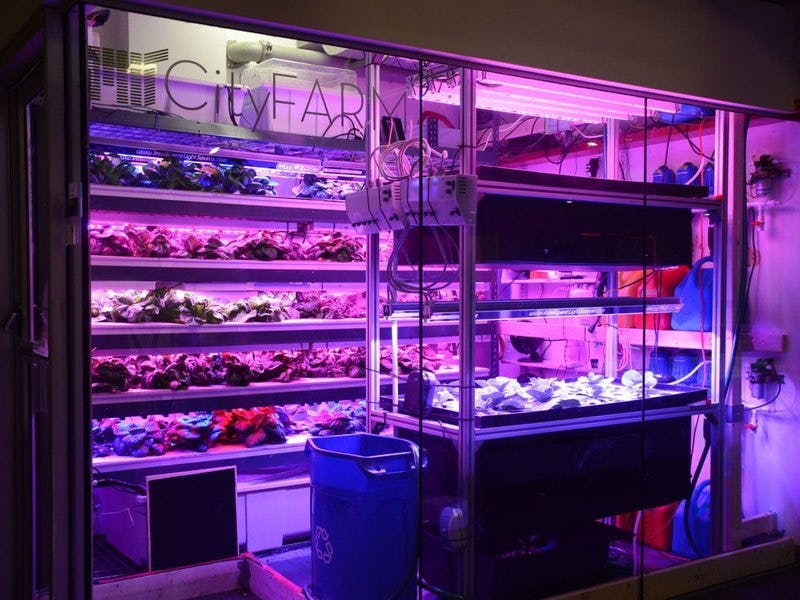Urban Farming as a "Personal Food Computer"
One man creates a smart-farming system for cities.

By the end of the century, four out of every five individuals on Earth will be living in a city. After thousands of years of agrarian lifestyles being the backbone of civilization, we are finally turning the page and becoming a world of cities. But a growing population and less farmers producing food is a recipe for disaster. A movement towards urban farming is looking to offset this imbalance, but that’s easier said than done. Farming requires a lot of land, soil, water, sunlight — you know, all that natural goodness that plants actually crave — and these things aren’t exactly abundant in urban spaces.
To make urban farming become something big, perhaps you need to think small. At least that’s the idea behind Caleb Harper’s “personal food computer”: a small aquarium-like contraption under which lettuces and legumes are grown — dirt-free — under LED lights and watered through misty sprayers. The whole thing is connected to a smart network that constantly monitors environmental conditions and makes adjustments to light and water systems to ensure crops are growing under the most optimal conditions.
Harper, an MIT engineer who runs the CityFarm research group at the university’s famed Media Lab, wanted to create an agriculture system which not only worked well in a small room in the middle of a dense city like New York or São Paulo, but also interfaced with data in a way that connected one’s farm to others around the community or even around the world.
“What’s cool,” Harper told Smithsonian is that at the end of your grow cycle you get a digital recipe. If you were to grow basil again, you would get the same thing every time. You can email the basil recipe to your friends, and they can run the program again and get the same thing, or they can start messing with it.”
All that’s needed for the food computer are connections to electricity and water. That’s all — no other rescues required (besides the plant itself). As long as your crops are less than four feet tall, you can pretty much grow anything, ranging from berries to big greens with extensive roots.
Harper wants to be able to get the cost of the whole thing under $300, which would be perfect not only for classrooms or educational environments, but also for city-dwellers looking to dip a few fingers into farming.
Of course, he acknowledges that the small size of the food computer can’t accommodate very extensive urban farming, but the system is a really amazing look at how urban farmers can successfully integrate smart-network tools and grow something right out of their closet. With the number of skilled farmers in the country getting older and young people choosing to get out of the country and take jobs in the city, more people will need to acquire even basic skills to grow food wherever they can.